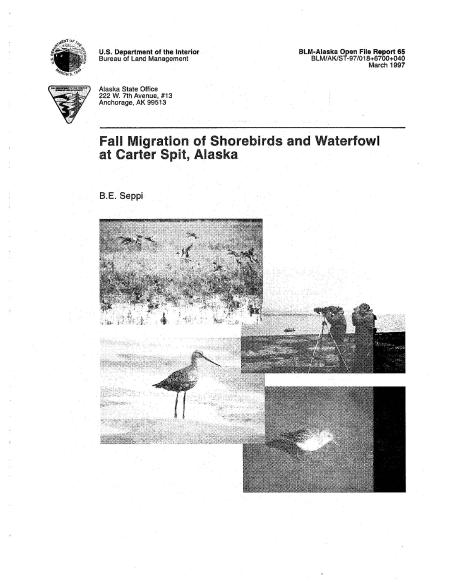Fall Migration of Shorebirds and Waterfowl at Carter Spit, Alaska

The Carter Spit area was surveyed for its importance to birds, particularly shorebirds and waterfowl, in fall migration in 1994 and 1995. I recorded 127 species of birds from 26 families during the study, including 26 waterfowl species and 31 shorebird species. Sixty eight species (54%) were confirmed breeders, 21 species (17%) were unconfirmed breeders. Overall bird use in each of the species predominantly used habitat was highest for intertidal. Inland ponds provided breeding habitat for the greatest number of species. Waterfowl brood surveys revealed a two year average production of 0.37 ducklings/km². Northern pintail black scoter and greater scaup were the predominant brood species. The intertidal flats were used by 75% of the species in migration. Western sandpiper, Calidris mauri were the most abundant shorebird, northern pintail, Anus acuta the most numerous of waterfowl. In totaled counts, over 41,000 ducks and geese and over 80,000 shorebirds staged at Carter Spit each season. Using various known turnover rates, at least 30,000 shorebirds, mainly western sandpipers, stage on the intertidal flats of the study area. Densities of shorebirds in Carter Bay were as high as 149 shorebirds/km². Numbers of migrant birds recorded in this study suggest the area is of regional importance to migrating shorebirds and waterfowl.
